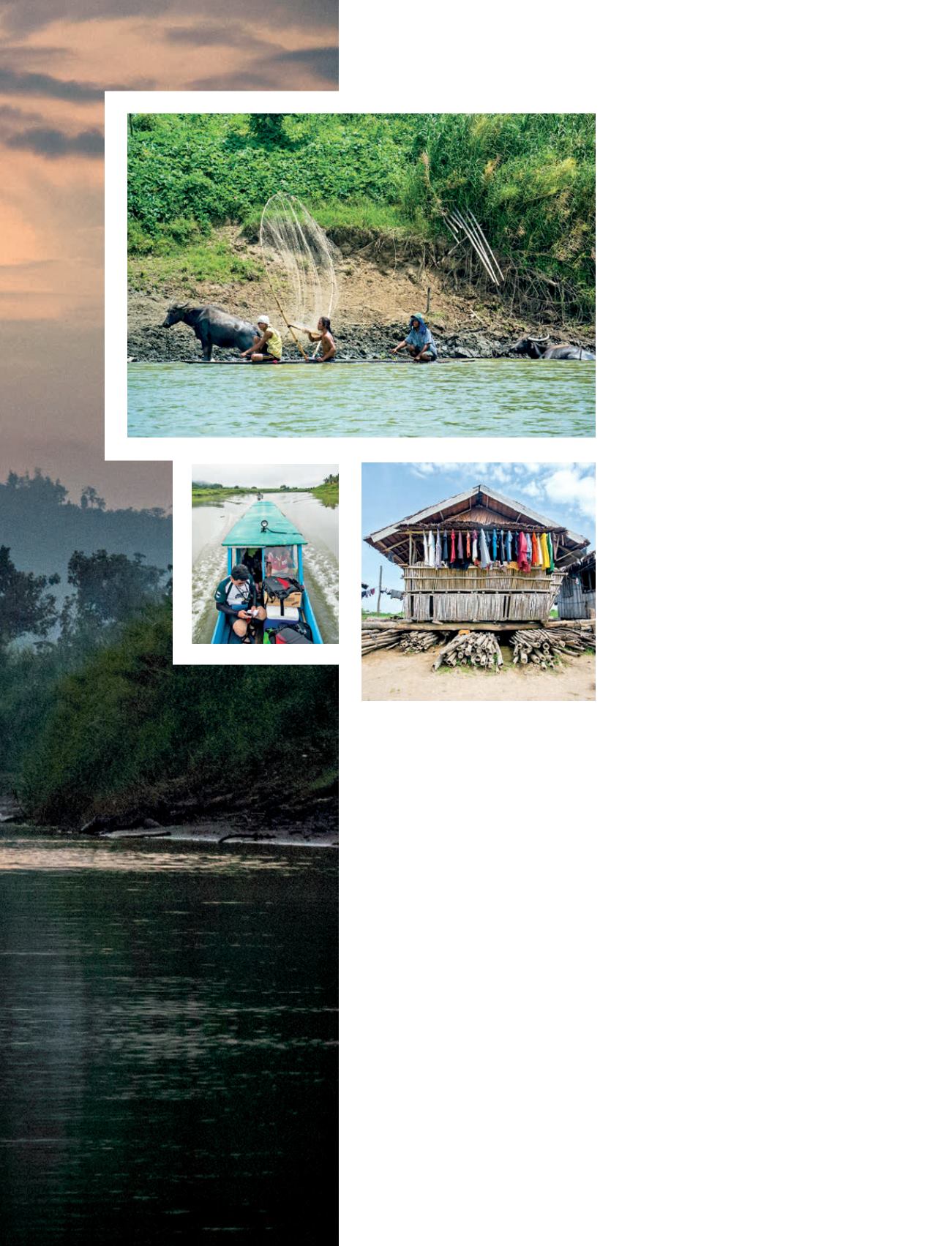
Day 1
The adventure begins in
Bunawan
It was early April, the height of the
Philippine summer, and fortunately
for us the river’s water levels were at
their lowest, hushing its treacherous
whirlpools into a seasonal hibernation.
Although I’d been cautioned that this
was a river of many faces, and that
powerful currents plow the artery
during the flood-prone monsoon
season, for nowwe predicted no major
rapids along our route. The river was
sultry, almost placid.
This river basin gives wealth and
life to easternMindanao, refreshing
a belt of land that stretches almost
350km. Traveling aboard a wooden,
flat-bottomed boat in the low-water
season, we opted to skip the shallower
and lesser-known upstream portions,
and drive fromDavao City to the
town of Bunawan. This was where we
would begin our 180km downstream
adventure.
The Agusan is fueled by the five
provinces that make up eastern and
central Mindanao. It starts out in the
forested slopes of Maragusan and
the Compostela Valley, and takes
its first tentative steps through the
great banana plantations of Davao.
Reeling from the assaults of Monkayo’s
goldmines, the waters seek temporary
sanctuary, settling amid the lakes
and streams of the expansive Agusan
Marsh. It then glides past the old river
towns —Talacogon, Esperanza and Las
Nieves — after which it is replenished
by the run-offs flowing down from
Bukidnon’s broad plateau, propelling
this mighty current northward all the
way to its confluence with the Surigao
Strait, at the vast delta of Butuan. The
Agusan River is the longest navigable
river in the Philippines.
It is said that a long time ago, when
all access toMindanao’s eastern
catchment submitted to the river’s
whims, Butuan was the center of trade.
Back then, the glint of golden nuggets
piled into boats cruising downstream
from the belly of Mindanao was a
common sight. Almost a century ago in
1917, a Manobo tribeswoman found the
Golden Tara peeping from the muddy
banks of one of the river’s tributaries.
This stunning 13th-century statuette
of a Hindu-Malayan deity is thought to
have been crafted by local artisans, and
was made from 21-karat gold.
Like many rivers of South-East Asia,
Agusan was also a conveyor belt for
precious tropical hardwood. But the
greatest of those trees are long gone,
and the river economy has changed.
The AgusanonManobo, along with
a flood of migrants that settled and
fished here over the last five decades,
still depend on her rich waters for food.
When the river vents its rage, flooding
the surrounding farms (an average of
seven floods are expected each year), it
brings new life to the soil, and the broad
expanses of corn, coconut, banana and
rice spread across its banks.
Early-morning scenes as the team chugs
along an artery of the Agusan River.
Right: a house in Barangay Sabang-
Gibong is built on bamboo stakes as it
floats, ready for rising waters


